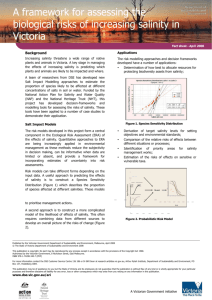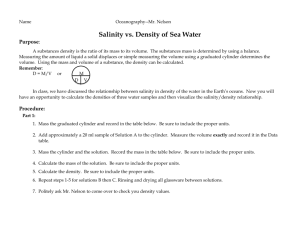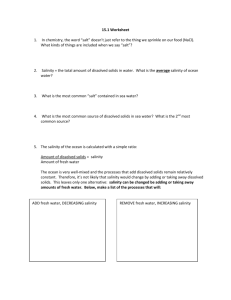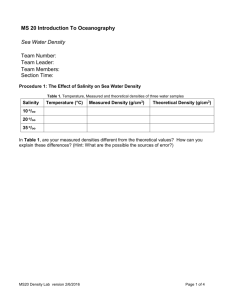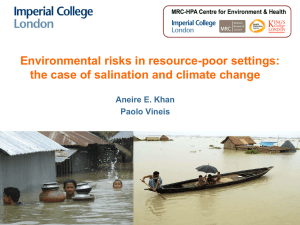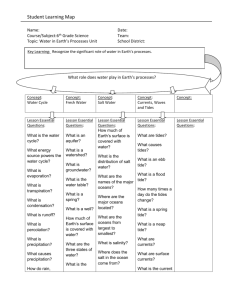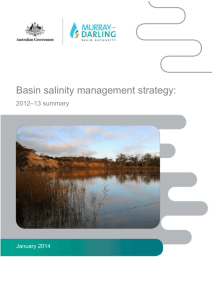Probability bounds analysis - Department of Environment, Land
advertisement
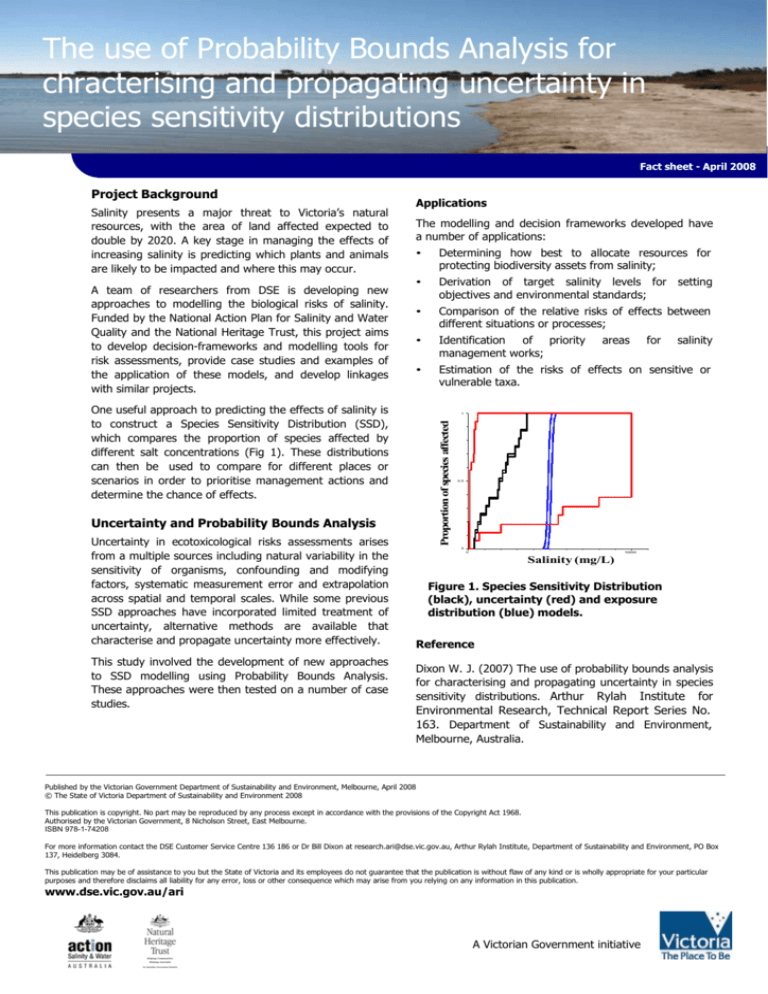
The use of Probability Bounds Analysis for chracterising and propagating uncertainty in species sensitivity distributions Fact sheet - April 2008 Project Background Salinity presents a major threat to Victoria’s natural resources, with the area of land affected expected to double by 2020. A key stage in managing the effects of increasing salinity is predicting which plants and animals are likely to be impacted and where this may occur. A team of researchers from DSE is developing new approaches to modelling the biological risks of salinity. Funded by the National Action Plan for Salinity and Water Quality and the National Heritage Trust, this project aims to develop decision-frameworks and modelling tools for risk assessments, provide case studies and examples of the application of these models, and develop linkages with similar projects. Applications The modelling and decision frameworks developed have a number of applications: • Determining how best to allocate resources for protecting biodiversity assets from salinity; • Derivation of target salinity levels for setting objectives and environmental standards; • Comparison of the relative risks of effects between different situations or processes; • Identification of priority management works; • Estimation of the risks of effects on sensitive or vulnerable taxa. One useful approach to predicting the effects of salinity is to construct a Species Sensitivity Distribution (SSD), which compares the proportion of species affected by different salt concentrations (Fig 1). These distributions can then be used to compare for different places or scenarios in order to prioritise management actions and determine the chance of effects. This study involved the development of new approaches to SSD modelling using Probability Bounds Analysis. These approaches were then tested on a number of case studies. for salinity Proportion of species affected 1 Uncertainty and Probability Bounds Analysis Uncertainty in ecotoxicological risks assessments arises from a multiple sources including natural variability in the sensitivity of organisms, confounding and modifying factors, systematic measurement error and extrapolation across spatial and temporal scales. While some previous SSD approaches have incorporated limited treatment of uncertainty, alternative methods are available that characterise and propagate uncertainty more effectively. areas 0.5 0 0 10000 Salinity (mg/L) Figure 1. Species Sensitivity Distribution (black), uncertainty (red) and exposure distribution (blue) models. Reference Dixon W. J. (2007) The use of probability bounds analysis for characterising and propagating uncertainty in species sensitivity distributions. Arthur Rylah Institute for Environmental Research, Technical Report Series No. 163. Department of Sustainability and Environment, Melbourne, Australia. Published by the Victorian Government Department of Sustainability and Environment, Melbourne, April 2008 © The State of Victoria Department of Sustainability and Environment 2008 This publication is copyright. No part may be reproduced by any process except in accordance with the provisions of the Copyright Act 1968. Authorised by the Victorian Government, 8 Nicholson Street, East Melbourne. ISBN 978-1-74208 For more information contact the DSE Customer Service Centre 136 186 or Dr Bill Dixon at research.ari@dse.vic.gov.au, Arthur Rylah Institute, Department of Sustainability and Environment, PO Box 137, Heidelberg 3084. This publication may be of assistance to you but the State of Victoria and its employees do not guarantee that the publication is without flaw of any kind or is wholly appropriate for your particular purposes and therefore disclaims all liability for any error, loss or other consequence which may arise from you relying on any information in this publication. www.dse.vic.gov.au/ari A Victorian Government initiative
